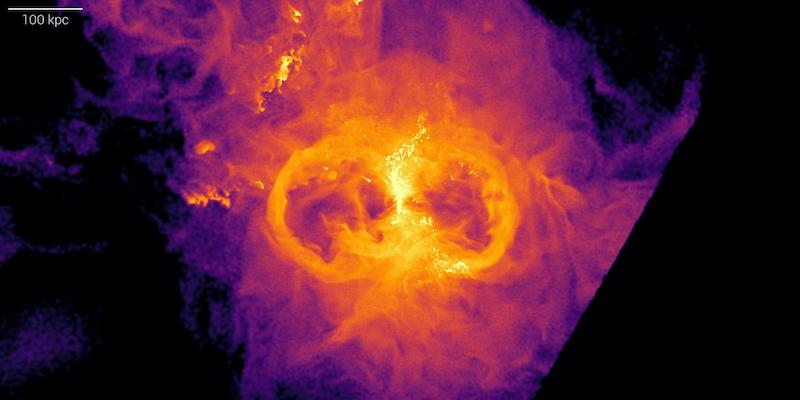
Supermassive black holes help
Supermassive black holes are often described as devouring, monster, behemoth, lurking and so on. These words make it sound as if black holes are a harbinger of destruction. It’s true a star that ventures too close might get spaghettified and utterly destroyed by a black hole’s strong gravity. Plus, a supermassive black hole often sends out massive beams of destruction (better known as jets). But maybe black holes can do more than lurk and destroy? In June 2021, astronomers said that these supermassive black holes might bring about new star birth!
The newly forming stars wouldn’t be in the large galaxies where supermassive black holes themselves reside. Instead, the new stars are in the small satellite galaxies that exist on the outskirts of the larger galaxies.
The peer-reviewed journal Nature published this research on June 10, 2021.
These astronomers looked at the data of as many as 124,163 satellite galaxies that reside in the outskirts of 29,631 large galaxies, each believed to have a supermassive black hole in its centre.
This impressive amount of data come from the Sloan Digital Sky Survey (SDSS), an ambitious project that has been mapping the sky for over two decades.
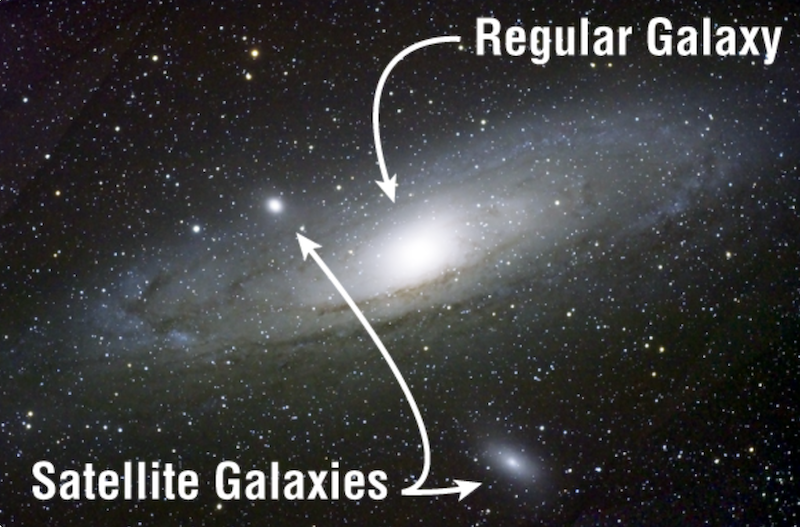
Supermassive black holes not only destructive?
Not all astronomers find the oft-used descriptions of supermassive black holes to be entirely fair. Krista Smith recently expressed her thoughts about how supermassive black holes are often portrayed:
Stop demonizing supermassive black holes. They aren't "lurking" in galactic centers; that's their home! They built it! They aren't "monsters." They don't "ravenously consume" everything they see. Keep a respectful distance and you'll be fine. They are just beautiful giants!
— Krista Lynne Smith (@Quasar_Gal) May 12, 2021
And indeed, although there are unimaginable amounts of energies involved that admittedly can wreak some havoc, this new research shows something different. It describes how the energy of a central supermassive black hole can blow away – from the direction of the jets – intergalactic gas far, far out in the outskirts of the galaxy halo, and form “bubbles” in the gas. When small satellite galaxies travel through these bubbles, the astronomers noticed that they form new stars at a higher rate than they otherwise would. Why is that?
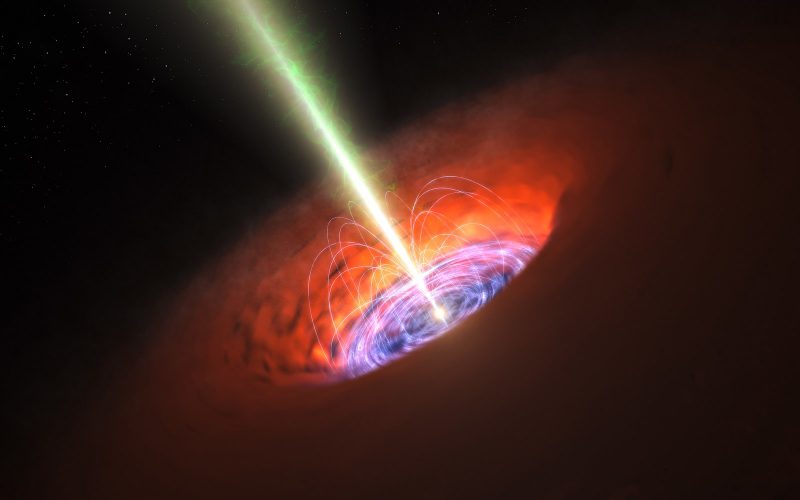
How often do stars form?
Your average galaxy won’t form new stars often. For example, our own Milky Way galaxy forms only about two stars per year. To form a new star, you need gas. Every galaxy consists of stars and gas (and dust and dark matter). The more gas, the more stars you can form. Consequently, the ability to form stars varies from galaxy to galaxy.
Some galaxies go through growth spurts. These are called starburst galaxies. They form a lot more stars than the Milky Way, on the order of a few hundred stars per year. And then there are some galaxies that barely form any stars at all.
An example of the last kind are the small kind of satellite galaxies that revolve around bigger ones. Our Milky Way has several, the most famous ones being the Large and Small Magellanic Clouds (these two are visible from the Southern Hemisphere).
Headwind from gas in the intergalactic medium
Satellite galaxies barely form any stars at all, and for many decades, astronomers have suspected that it’s because the intergalactic medium (IGM) that is present between galaxies are stripping away their gas. The gas in the intergalactic medium is extremely hot and thin; just about one atom per cubic meter or less. You can compare that to gas between the stars within a galaxy – the interstellar medium – which has one atom per cubic centimeter (about the size of a die).
Despite how unimaginably thin the intergalactic gas is, it affects galaxies moving through it, like a headwind you’d feel when riding a motorbike. It doesn’t affect the already existing stars in the small galaxy. But, to make new stars you need gas, and the galaxy’s gas – the material for making stars – will definitely be affected by the gas it meets as the galaxy moves through it, and it is stripped away. Consequently there is not enough gas left to form new stars, and the galaxy turns barren, if you will. Astronomers call this effect of losing gas while travelling through the IGM ram pressure stripping.
This is a very time-consuming process and nothing we can observe in real time. Instead, astronomers take help from simulations to figure out what might be going on.
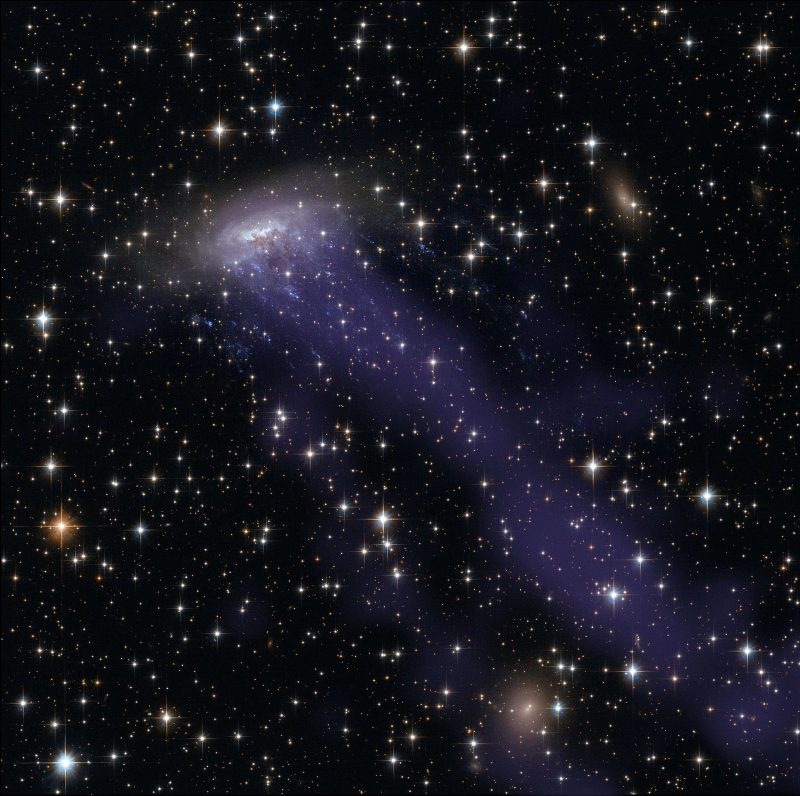
A lunch break and its consequences
Over a lunch break at the Max Planck Institute, two astronomers – a theorist and an observer – had a discussion. The theorist, Annalisa Pillepich, had made a special kind of simulation (see the image at the top of this article). The observer, Ignacio Martin-Navarro, was a specialist at working with large data sets like the SDSS.
In the simulation, Pillepich found bubbles in the intergalactic gas, with much lower gas density, on each side of the galaxy, caused by the activity of the supermassive black hole in its center. Its jets are stretching out from the accretion disk in each direction, blowing away gas like a leaf blower clearing leaves in the autumn. The two astronomers mused: What would happen to satellite galaxies traveling through these empty cavities?
A Max Planck Institute statement said:
Martín-Navarro took up this question within his own domain. He had extensive experience in working with data from one of the largest systematic surveys to date: the Sloan Digital Sky Survey (SDSS), which provides high-quality images of a large part of the Northern Hemisphere … He examined 30,000 galaxy groups and clusters, each containing a central galaxy and on average four satellite galaxies.
What they found was a surprise: There were more actively star forming satellite galaxies in the direction where the supermassive black hole ejects its energy.
Why is this a surprise? It’s because one would think that the energy from the supermassive black hole would disturb the star formation and blow it out, like a wind blows out a candle. Instead, these astronomers said, the black hole outflows clear the way in the intergalactic medium so that satellite galaxies traveling through are not affected by it, and preserve their ongoing star formation. On average, these galaxies were 5% less likely to have had their star formation activity quenched.

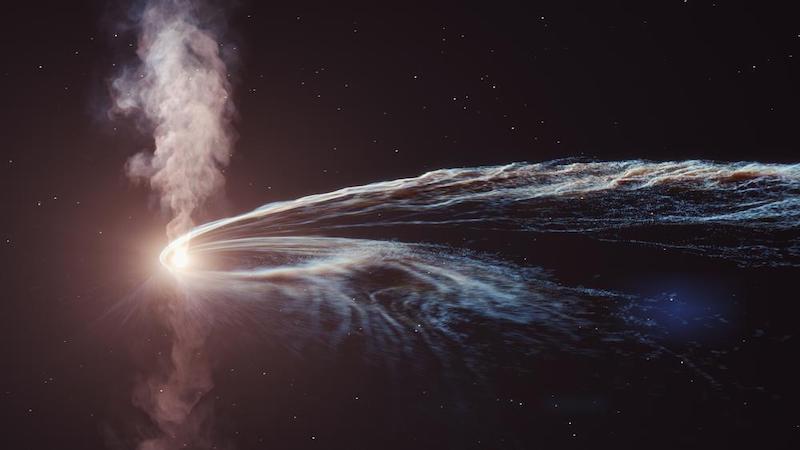
Bottom line: Astronomers found that supermassive black holes may clear large bubble-like areas in the outskirts of their host galaxies. When small satellite galaxies travel through these areas, they will form more stars than they otherwise would.
Source: Anisotropic satellite galaxy quenching modulated by black hole activity











